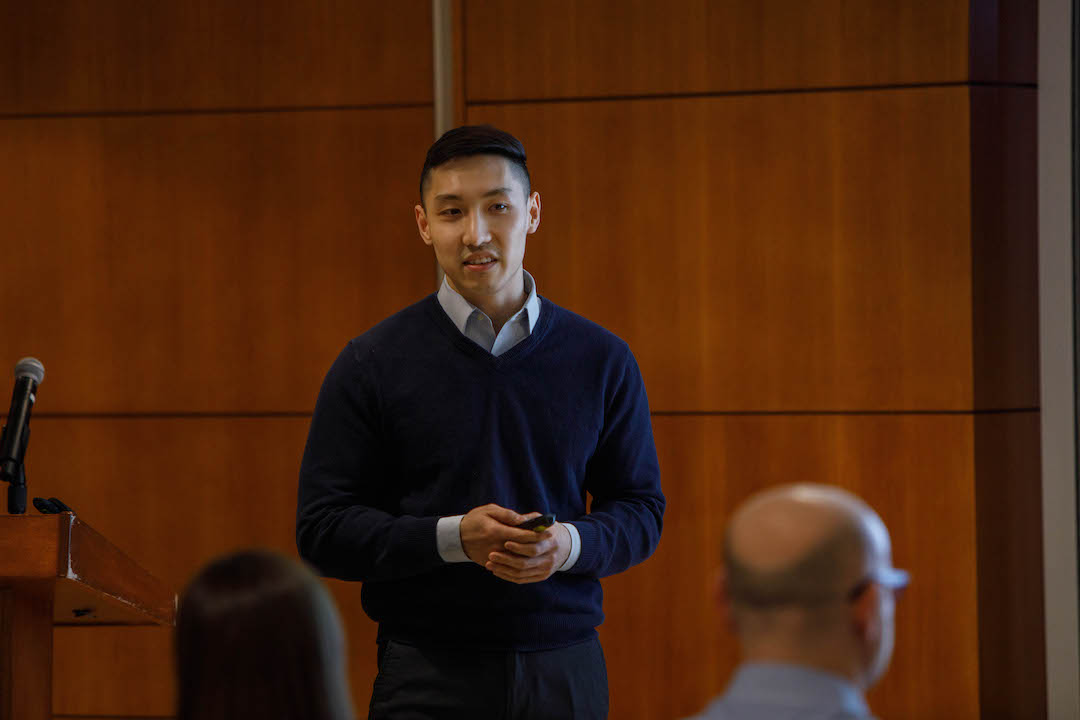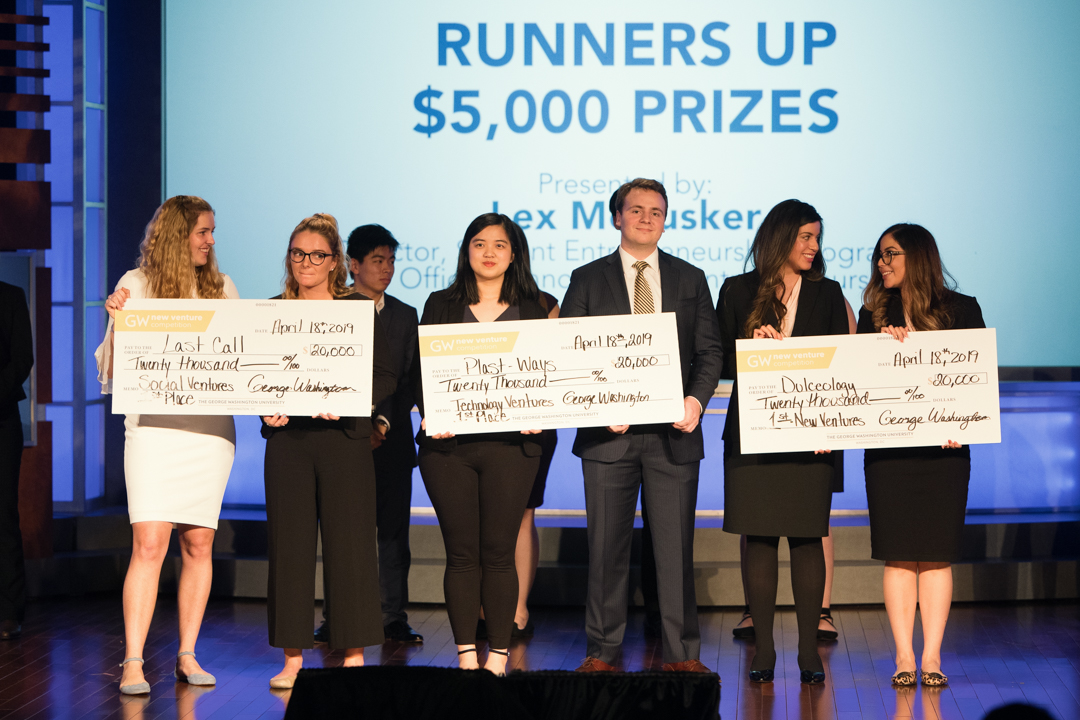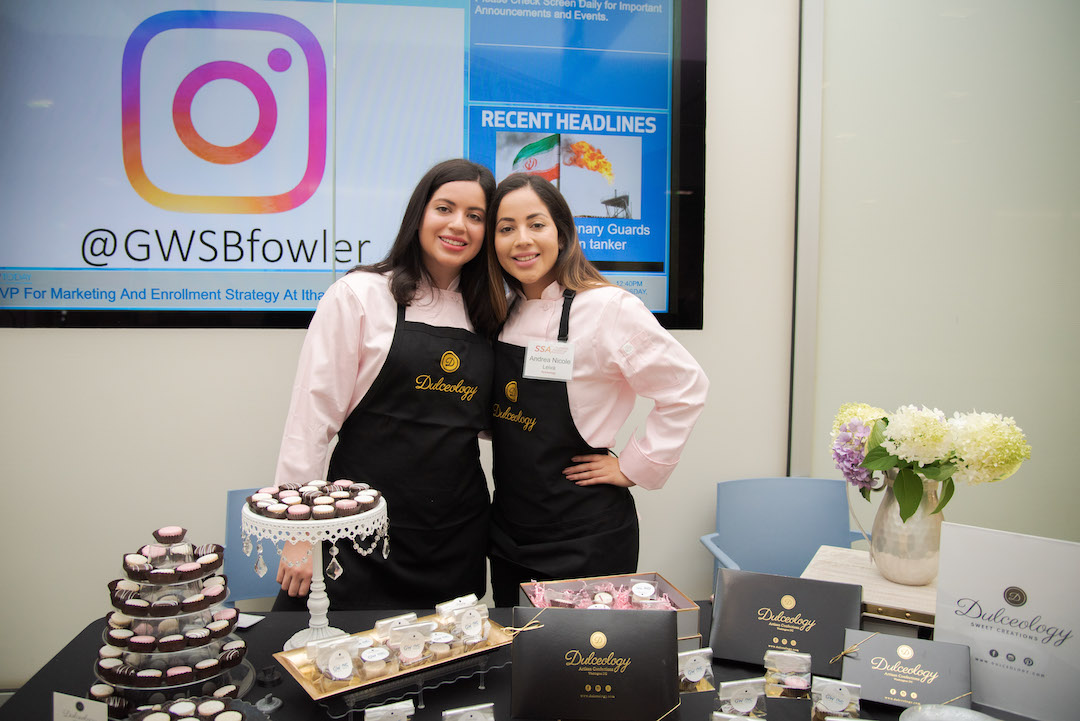By Tatyana Hopkins
After traveling more than 7,000 miles from Korea to Washington, D.C., research professor Yoonjoo Choi, and his student, Donggun Kim, found themselves on a long journey up the East Coast.
They set out on a road trip from the George Washington University to Dartmouth College in New Hampshire and back to employ customer discovery techniques they learned from experienced GW startup mentors as part of the Korea Innovation Center’s (KIC) Tech Frontier program. They made stops at Harvard University, the University of Massachusetts Amherst, Johns Hopkins University and biotechnology conferences.
Funded by the South Korean government, KIC Tech Frontier strives to transform early-stage Korean technology teams into marketable business models. This summer, the GW Office of Innovation and Entrepreneurship (OIE) hosted the program on campus as part of a new partnership.
Under the two-year agreement, each summer for three weeks GW instructors will guide two cohorts of 30 early-stage Korean teams each to develop their business models and explore their competitiveness in the U.S. market through interviews with potential customers and partners in the United States. Ten more teams will be sent to Silicon Valley for a two-week program.
“This agreement reflects the shared belief by GW and KIC that both the U.S. and Korea benefit from increased dissemination of innovations across borders based on the identification of real customer needs and value propositions,” said Jim Chung, GW’s associate vice president for research, innovation and entrepreneurship.
Dr. Choi and Mr. Donggun Kim were in the program’s first cohort.
They hoped to find a need in global pharmaceutical laboratories for Immunis, technology they developed at the Korea Advanced Institute of Science and Technology. Immunis generates computer-based risk assessments of developing drugs’ potential to create harmful immune responses in patients and techniques to reduce those responses.
They interviewed 66 researchers and executives in academia, biotechnology venture capital firms and private drug development companies. They learned there was no demand for the technology they touted as “fast and cheap” without experimental validation of its capabilities.
“In the late stages of drug development, people are willing to spend as much as possible as long as it works,” Dr. Choi said. “Our team is entirely based on computers and research. Unfortunately, I don't think our product can fly as it is.”
But he said the team found strength in its “weak points,” because they gave them direction to pivot for improvement.
Although many of the teams’ technologies were still theoretical and conceptual, they were tasked with finding a need for their idea and conducting at least 70 in-person interviews despite having limited American networks and connections.
Hyemin Son and Jimin Son completed 72 interviews.
They said the hardest part was asking the “right questions” to get insight into a new plant-based slime product they are developing for children.
“This program is for finding customer need so we can design our item for success in the market,” said Ms. Jimin Son, a graduate cosmetic biotechnology student at Kangwon National University. “So designing good questions for the interview is very important.”
Ms. Hyemin Son said they began the customer discovery process with “shallow” questions, asking visitors to the Smithsonian National Museum of American History about the kinds of toys their children preferred and whether they liked slime.
Soon they changed their questions to ask potential customers about their negative experiences with slime.
“All of the people said mess,” Ms. Jimin Son said.
With a new understanding of U.S. customer needs, Ms. Hyemin Son said, they reevaluated their U.S. business model to emphasize their product’s stain-free feature rather than its natural ingredients.
“The Korean market is different from the U.S. market,” she said. “In the Korean market, slime products are also very popular, but many customers worry about the safety of slime. Here parents want to buy washable slime.”
The teams will finish their customer discovery in Korea for three weeks. Once complete, some teams will get funding from the Korean government to continue their technology commercialization.
Two weeks into interviewing lab researchers, Hojun Kim and his partner, Bongjoon Kim, learned there was a lot of competition in the U.S. lab research market for cell counting technology like the one they developed for their own use when their university lab funds were cut.
“We knew there were other kinds of cell counting methods out there already, but we naively thought our product could cut into the market easily,” said Mr. Hojun Kim, a graduate biomedical engineering student at Korea University.
However, one interview at the end of the second week changed their direction.
The interviewee told them beer brewers could use their product to count yeast cells in their brew because the types and number of yeast cells are important to the taste of the beer. He also said there was less competition in that market.
The team spent their last week contacting professional and home brewers and conducted nine interviews in their potential new market.
“It's not enough to make a major decision to invest huge amounts of money,” Mr. Hojun Kim said. “But we learned how to fish here, and now we can do more customer discovery in Korea.”





